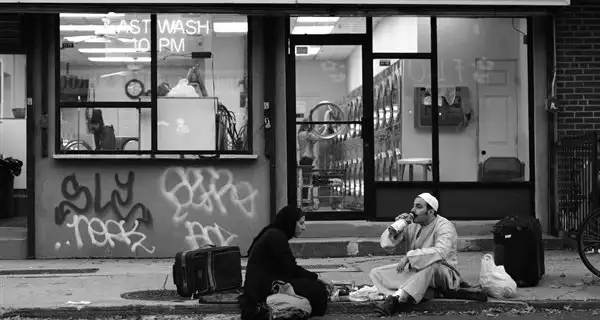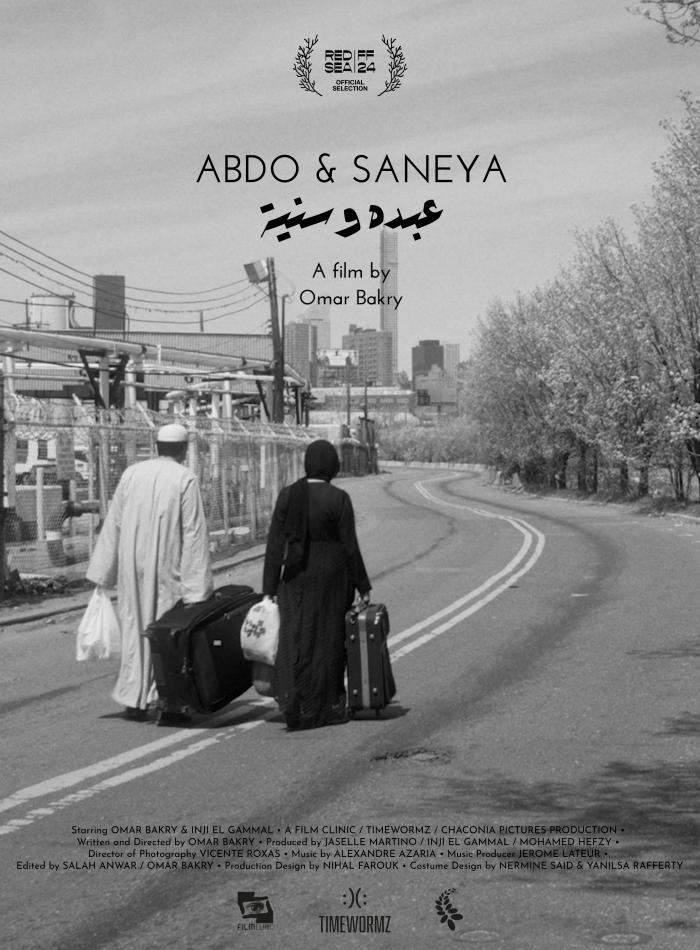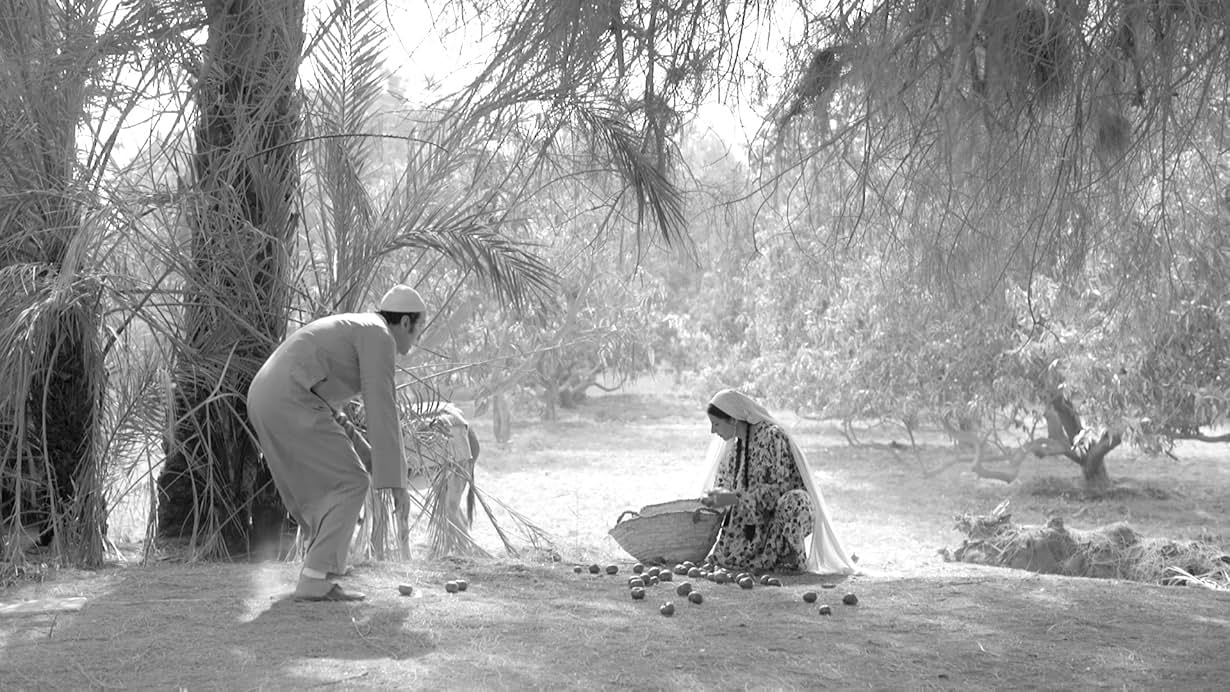The film “Abdo and Saneya”, presented in the “Arab spectacular” section of the fourth edition of the International Film of the Red Sea Film (RSIFF), which takes place from December 5 to 14, 2024, is a work that reinvents a practically disappeared cinematographic art: the silent film in black and white.
“Arab spectacular” is a section of the festival, dedicated to highlighting the richness and diversity of Arabic stories. It celebrates not only the cultural heritage of the region but also its contemporary look at universal issues.
Under the daring realization of Omar Bakri, this moving and poignant story transports the spectator in a unique journey between Egyptian traditions and Western modernity, while exploring universal themes such as love, resilience, and the questioning of patriarchal standards.
A striking introduction
The film opens onto a scene where we see Abdo and Saneya, a couple of Egyptian peasants, freshly arrived at New York airport. Already disoriented by their unknown environment, they quickly get lost in the maze of the airport, unable to locate the contact supposed to welcome them. Between confusion and endless waiting, their hope is falling. Finally, they resigned themselves to leaving the airport for the city, but their loneliness and their vulnerability only increase. Before they even set foot outside, they are immersed in a world of uncertainty and confusion. This introduction, imprint of emotion, fixes the tone of a universal and deeply human story: that of migrants confronted with the unknown, armed only with their love and their resilience.
A tribute to the cinema of yesteryear
Omar Bakri, accomplished director, signs his second feature film here. A great admirer of Charlie Chaplin and the classics of silent cinema, he chooses to exploit this style to tell a contemporary story. The film uses the aesthetics of black and white to highlight the cultural gap between the protagonists and their new environment. The dialogues are replaced by signs and a carefully composed soundtrack, mixing oriental and western music. The director explains that this lack of dialogues encourages the spectator to focus on the images and emotions expressed by the actors.
The last scene, filmed in color, marks a striking contrast with the rest of the work. It symbolizes the progressive adaptation of the couple to their new environment and their entry into a modern world, while offering a fence full of hope to a story filled with challenges.
A poignant story of resilience
Abdo and Saneya, embodied respectively by the director himself and actress Injy El Gamal, are a couple united by a deep love. By flashbacks inserted throughout the film, the spectator gradually discovers their history and the reasons for their arrival in New York: their desire to find a treatment to overcome their infertility.
The film explores their difficulty in conceiving a child, a subject often taboo in Egyptian society. Abdo, a loyal and loving husband, refuses to give in to social and family pressure that encourages him to marry a second woman to have an heir. This resilience in the face of patriarchal standards makes abdo a rare and touching character.
Their trip to New York, undertaken in the hope of finding treatment for their infertility, is strewn with pitfalls. They start by spending a few nights in the street, without being able to find any refuge. They also can’t find food, their Egyptian books do not have the USA. In any case, neither Abdo nor Saneya know the concept of exchange or understand why their books are not accepted by American traders. Abdo begins by saying that he is the head of the family and that it is his responsibility to find them where to accommodate and eat. “” I am the man“, He said. But in fact, immediately, we will realize that Saneya is more resourceful than him. When Abdo gets driven out with a convenience store where he wanted to buy food because he has no dollars, it is Saneya who will find the subterfuge to “buy” this food, even if with cunning.
Lost in a city they do not know, they end up finding refuge with a family of compassionate Egyptian migrants. While Abdo is struggling to keep a job because of his clumsiness: in his first job on a hot dog sales trolley, he forgets to put the brake, and the trolley descends the street; In his second job in a fast food, he replaces salt on the fries with a maintenance product … Saneya, thanks to his culinary talents, manages to find a stable work in a restaurant where she successfully introduces Koshary, a traditional Egyptian dish.
A bold social criticism
The film tackles in a subtle but impactful way several social questions, including gender inequality and taboos surrounding male fertility in patriarchal societies. Abdo himself is shocked when doctors suggest that he tests to verify his fertility, reflecting a widespread belief that only woman can be responsible for the absence of a child. The film questions these prejudices, while demonstrating that love and understanding can transcend these rigid social constructions. Abdo who, at the start of the film, behaves in undisputed chief of family – it is up to him to order, to decide, to provide roof and food – reminds from time to Saneya that she could not have children. He will gradually realize his stupidity and even end up regretting his words and behaviors when he learns that if they have no children, it is because he is sterile and that Saneya is healthy and saved. And as Abdo had refused to repudiate Saneya or take a second wife, Saneya will refuse to leave him to go back to life and have children.
In addition, when Saneya becomes the main source of income of the home, Abdo accepts, although hardly, to take care of household chores. This reversal of traditional roles, although unconce been for a man of Haute-Égypt, is represented with tenderness and humor, illustrating how love can allow cultural barriers to overcome.
A unique cinematographic experience
As a spectator, I was transported by Abdo and Saneya. This film offers a rare cinematographic experience, recalling the simple but powerful emotions of the first days of cinema. Music, although sometimes too strong, adds an emotional dimension that transcends words. The performances of the actors, amplified by their expressive gestures, captivate and move, allowing the spectator to feel each test and each triumph of the couple.
The film, by its format and its aesthetics, also offers a reflection on time and evolution. He gave me the impression of going back in time while immersing myself in a contemporary story, resonating with questions still relevant today. This pleasure of watching a film from another era, while living a deeply current story, moved and delighted.
Omar Bakri’s message
Omar Bakri, director and main actor of the film, shared during the projection his love for silent cinema and his wish to reintroduce this style to the modern public. According to him, the silent film, with its universal language of images and music, allows you to tell stories in a more universal way. The choice to complete the film in color is a symbolic decision which underlines the adaptation and the evolution of the couple, while marking a transition to a new era. Abdo and Sanya leave their world in black and white, their traditional world, to enter modern life.
A film not to be missed
Abdo and Saneya is much more than a tribute to classical cinema. It is an ode to love, resilience and human capacity to adapt and overcome obstacles. This film recalls that simple stories, told with sincerity and talent, can touch the hearts of spectators timely.
For cinema enthusiasts, this Omar Bakri film is an experience to live. He gives life to a forgotten art form while approaching universal themes in a new and inspiring way. A real cinematographic success that will remain in minds for a long time.
Neïla Driss










